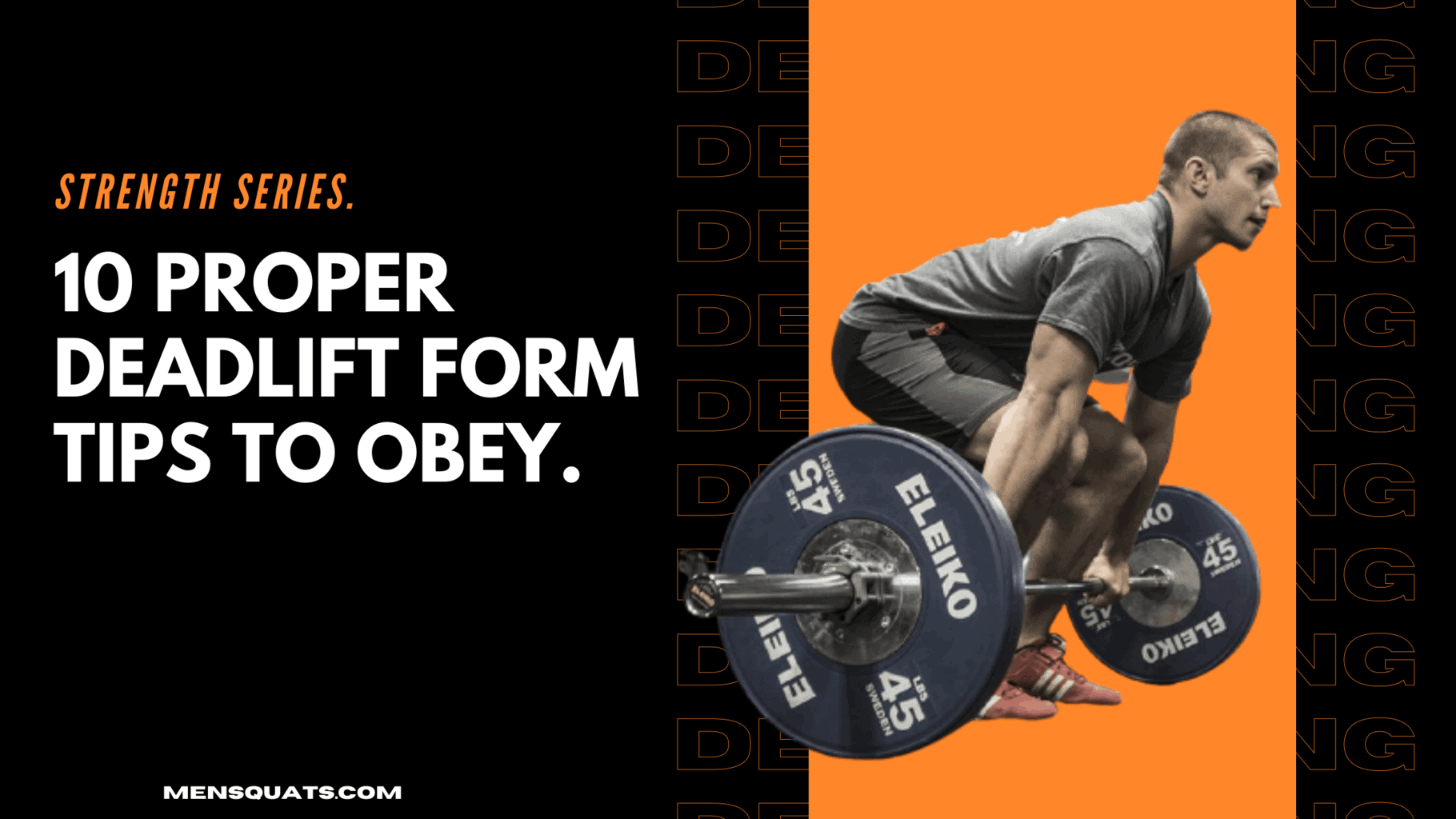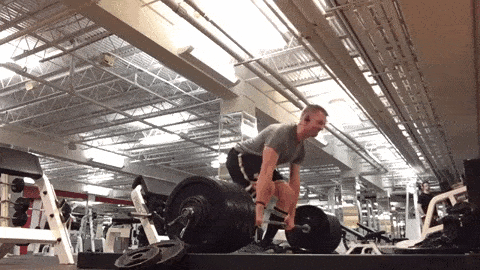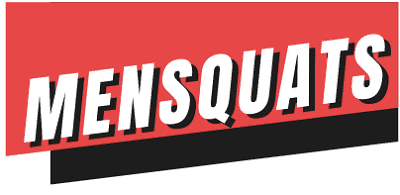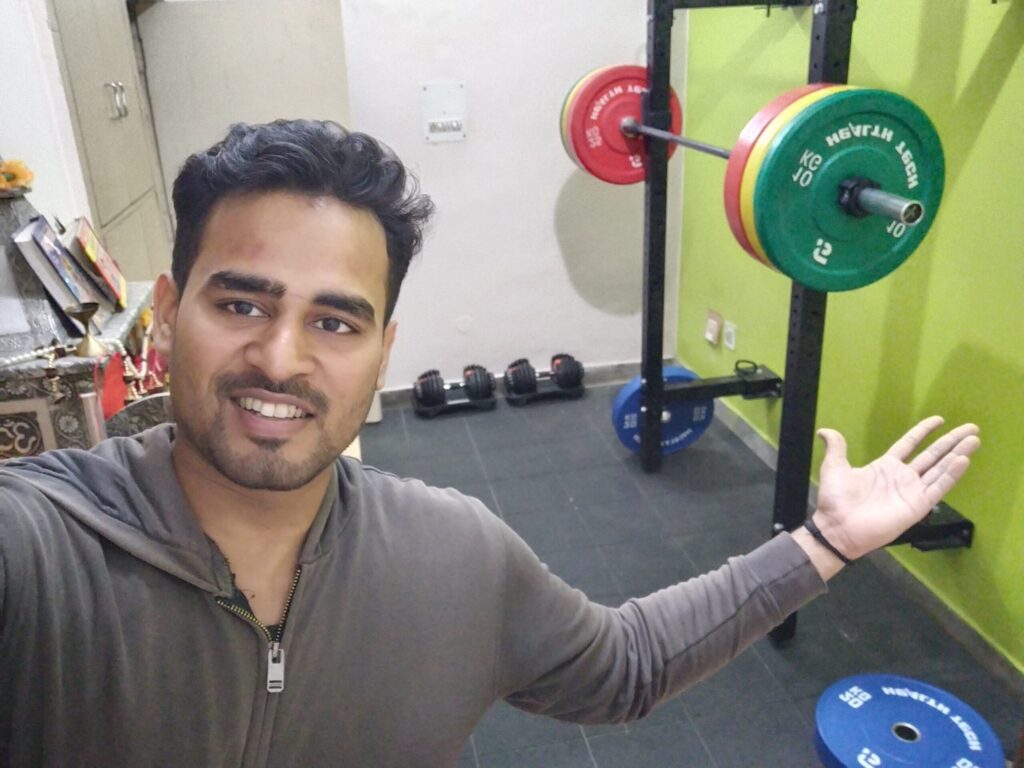How to Perfect Deadlift Form- 10 Proper Deadlift Form Tips to Obey.

Proper deadlift form.
An excellent form under the bar/ over the bar is a recipe for symmetrical gains and uniform training progression over time. A good form is for a good reason: It allows you to lift more, train the muscles you want, and also reduces the risk of injury or pain.
When talking about deadlift: A Deadlift is considered being the ultimate expression of strength. The barbell deadlift looks like an easy exercise, just apply the brute force and lift the barbell off the ground, but for beginners, it’s harder than meets the eye.
Beginners, who are not seasoned weightlifters, have to be extra careful while performing a deadlift. Lower back pain or injury is not what you want, the reason being is a poor form or lack of information about the exercise.
For some deadlift comes naturally, while others entirely avoid doing deadlifts because they consider this exercise to be too dangerous. Abstaining this exercise from your training program altogether is a personal choice linked to individual anatomy, rather than a hard line for everyone.
But even if you aren’t concerned about the exercise- you should absolutely understand a proper deadlift technique.
10 tips on how to perfect deadlift form:

This checklist is for all lifters (beginners to advanced) to ensure that they can apply proper deadlift form tips in their training and would improve doing them.
1. Starting height is relative.
Deadlifts from the floor might NOT be for everyone; at least in the beginning. I’ll do a detailed post on this later. But if you cannot get into the starting position with ease, pain-free, or with comfort, then by all means elevate the barbell height. With time, work towards a lift from the floor.
2. Use full-length long arms.
Firstly, bent elbows are going to tax the bicep tendons unnecessarily while putting the bicep at a mechanical disadvantage. Secondly, using the arms as straight hooks will allow for a better starting torso position and a smaller bar travel. Both of which are crucial for lifting with the most efficient biomechanical strength.
3. Keep OVER the bar.
It’s a game of see-saw leverage. For the best leverage, the shoulders need to be set up over/in front of the bar. Deadlifts are about having a straight (neutral) back and not an “upright” one. Trying to be too upright, lifters often set up their shoulders too far behind the bar. This will add extra bending moment stress to the spine while also losing out required leverage.
4. Keep distance between thighs and ribs.
At the bottom, for a good hinge, one must not try to go so low that their ribs crash into their thighs only to create a better reach to the floor. This is a good way to stay within the limitations of an actively safe hinge. Use cue no.1 until this becomes better.
5. Push the floor away.
The first half of the initiation is a strong leg drive. The correct deadlift form is primarily assisted by a solid hip extension (Hamstring + glutes) which needs us to maximally push down to create sufficient force through the posterior.
6. Stay patient at lift-off.
The initial milliseconds when the bar just comes off the floor might seem like an eternity. Within this time, one might feel taxed. The weight might not feel like it’s moving. Understand that not everyone has muscle fiber ratios biased towards an explosive lift-off. Stay with it, keep applying ample force, and the bar will move, eventually.
7. The upper back is a powerhouse.
Successful deadlifts are not just a posterior leg drive, but also a posterior pull through. As you initiate the lift, don’t forget to pull with the upper back as much as your pushing with the legs. This will make the hip extension more pronounced and effective. Also, will make you rely more on the power of the massive upper back musculature as opposed to the lower back.
8. Quads to finish.
Picked this one from Olympic weightlifters. As we pass through the mid-range of the pull (from mid-shin to knee) be cognizant of the quads. Feel them, engage them. Failed/sloppy lockouts are often due to the non-engagement of quads. Practice this on an empty barbell; as you come up, pause at the knee and feel the quads burn, then finish through.
9. The finger grip.
This is to increase the reach of the arms in the start position (specially for short arm lifters). Let the deadlift bar pass from where your palms end and fingers begin, rather than from dead centre of the palms. This marginal 2 cm difference can do wonders to a better starting position and leverage. And don’t worry, with some practice, the grip won’t slip.
10. Brace, pull, wedge; sequence matters.
A brace is to get the core ready for the load. Once you brace, don’t play around with the spine rounding and tensing it again and again. Pull is to ‘cut the slack from the bar’. This will make sure the weights don’t clang as we start the rep, keeping tension in the bar. Wedge is to get the hips into a firing position, typically done by pulling the torso slightly up and pushing the legs deep into the floor.
Last words
There is a lot of nuanced stuff here, so make sure you work on ONE THING AT A TIME. The body can only learn limited stuff at a time. There is no fastest way to increase deadlift as the body adapts to load. So go SLOW and beat your deadlift numbers.
Let me know if this helps. Happy Dead lifting 🙂
PS: Here are some of our other free articles in Strength Series:
- [Ultimate Guide on] Best time under tension for hypertrophy?
- How to Reduce Muscle Pain After Workout?
Sharing is caring. ❤




